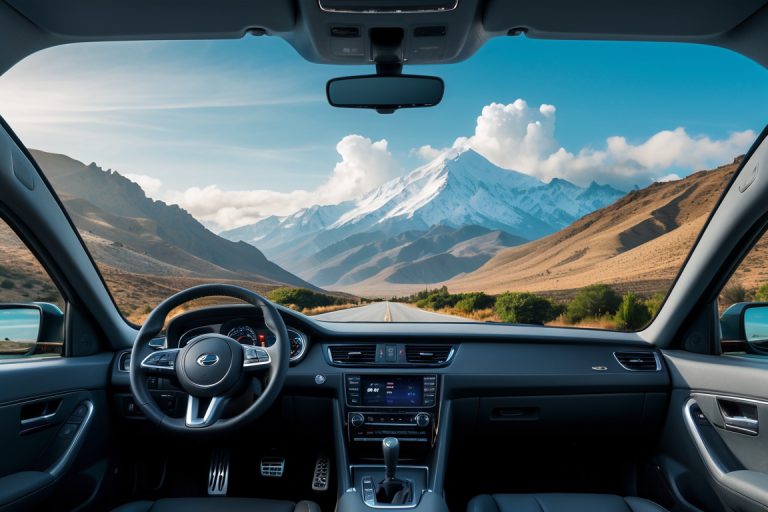In a world where popular tourist destinations often feel overcrowded and over-commercialized, there’s something incredibly appealing about finding a hidden beach – a peaceful haven where you can disconnect from the hustle and bustle of everyday life. Whether you’re seeking solitude, pristine nature, or a private escape from crowds, these secluded beaches offer a slice of paradise that many travelers may never even know exist. If you’re ready to leave behind the crowded resorts and discover some of the world’s best-kept coastal secrets, here are some hidden beaches that should be on your radar for your next vacation.
1. Plage de Saleccia, Corsica, France
Located on the northern coast of Corsica, Plage de Saleccia is a stunning stretch of white sand, surrounded by dense vegetation and turquoise waters. The beach is somewhat remote, requiring a 4×4 drive or a 30-minute hike through the wilderness to reach it, which makes it less accessible than many other beaches in Europe. However, this isolation is what makes it so special. The clear water and serene atmosphere are perfect for swimming, lounging, and simply enjoying the natural beauty of the Mediterranean coast. With its unspoiled environment, Plage de Saleccia is a haven for nature lovers and those seeking tranquility.
2. Secret Beach, Kauai, Hawaii, USA
Kauai, often called the “Garden Isle” of Hawaii, is renowned for its lush landscapes and stunning beaches. Among them is Secret Beach, a hidden gem located on the northern shore of the island. The beach is accessed via a steep trail down a cliff, which keeps it relatively undisturbed by tourists. The golden sands, dramatic cliffs, and crashing waves create a dramatic and picturesque backdrop for visitors looking for privacy and beauty. While the beach is perfect for a quiet retreat, it’s important to be mindful of strong currents, making it ideal for those who are comfortable with nature’s more rugged side.
3. Anse Source d’Argent, La Digue, Seychelles
Seychelles, a dream destination for many, boasts some of the most beautiful beaches in the world. However, many of its top beaches are crowded with tourists, especially around the more well-known islands like Mahe and Praslin. But if you venture to La Digue Island, you’ll find Anse Source d’Argent, one of the most picturesque and secluded beaches in the region. With its pink-hued sands, large granite boulders, and calm, shallow waters, this beach feels like a private paradise. The best part? It’s still relatively under the radar compared to the more visited spots on the larger islands, so it offers a quiet escape where you can enjoy the beauty of nature at your own pace.
4. Hidden Beach, Marieta Islands, Mexico
Situated off the coast of Nayarit, the Marieta Islands are home to a beach that’s as unique as it is hidden. Known as Playa del Amor, or Hidden Beach, this stunning spot is located inside a large crater on one of the islands, with access only available through a small tunnel during low tide. The beach itself is secluded and protected by cliffs, offering crystal-clear waters and pristine sands. The islands are part of a national park, and only a limited number of visitors are allowed to visit each day, ensuring that the beach remains peaceful and unspoiled. You’ll need to book a tour to access the beach, but once you’re there, you’ll feel as if you’ve discovered an untouched slice of paradise.
5. Ekincik Beach, Dalyan, Turkey
Tucked away along the Turquoise Coast in southern Turkey, Ekincik Beach is one of the area’s lesser-known gems. Accessible by boat from the nearby town of Dalyan, this tranquil beach offers a peaceful escape from the more tourist-heavy destinations in Turkey, like Bodrum and Marmaris. Surrounded by hills and lush forests, the beach’s crystal-clear waters are perfect for a refreshing swim or a leisurely day of sunbathing. The beach is often quiet and uncrowded, and you may even spot sea turtles in the waters. With its remote setting and natural beauty, Ekincik Beach is the perfect destination for those seeking serenity.
6. Nacpan Beach, Palawan, Philippines
Palawan, known for its pristine beaches and crystal-clear waters, has long been a top travel destination in the Philippines. While some of its beaches are heavily visited, Nacpan Beach, located just north of El Nido, offers a quieter alternative. This long stretch of golden sand is bordered by palm trees and backed by lush hills, creating an idyllic scene. The beach is relatively undeveloped, with only a few small resorts offering a peaceful place to stay. Visitors can enjoy swimming, sunbathing, and leisurely walks along the beach without feeling crowded, making it the perfect spot for a relaxing getaway.
7. Playa de las Conchas, La Graciosa, Canary Islands, Spain
La Graciosa, one of the smallest islands in the Canary Islands archipelago, is known for its unspoiled beauty and secluded beaches. Playa de las Conchas is the island’s most famous hidden beach, offering a stunning view of the Atlantic Ocean and neighboring islands. The beach is accessible by a short hike or a boat ride from La Graciosa’s main village. With its golden sands, crystal-clear waters, and a backdrop of volcanic hills, it feels like a true escape from the world. The lack of commercial development ensures a peaceful atmosphere, and visitors can often enjoy the beach to themselves.
8. Whitehaven Beach, Whitsunday Islands, Australia
While Whitehaven Beach is becoming more popular due to its inclusion in various travel lists, it still retains an air of exclusivity due to its remote location in the Whitsunday Islands off the coast of Queensland, Australia. Accessible only by boat, seaplane, or helicopter, Whitehaven Beach offers pristine white silica sand and turquoise waters that are perfect for swimming, sailing, or simply relaxing. The beach’s natural beauty, combined with its isolation, makes it a peaceful retreat that’s perfect for travelers looking to escape the crowds.
9. Baia do Sancho, Fernando de Noronha, Brazil
One of Brazil’s most hidden treasures, Baia do Sancho is located on the remote island of Fernando de Noronha, a UNESCO World Heritage site. Accessible only by boat or via a steep staircase down cliffs, the beach is often regarded as one of the most beautiful in the world. Surrounded by lush greenery and towering rock formations, the beach offers calm waters ideal for snorkeling, swimming, and soaking in the natural surroundings. The island is a protected national park, which helps maintain the pristine condition of the beach and its surrounding ecosystem.
10. Zlatni Rat, Brac, Croatia
While Croatia’s Adriatic coast has been gaining popularity in recent years, Zlatni Rat, or Golden Horn, remains one of the country’s most secluded and beautiful beaches. Located on the island of Brac, this stunning beach is known for its unique shape and crystal-clear waters. The beach extends out into the sea like a golden tongue, changing shape with the tides and wind. Although Zlatni Rat is accessible by boat or bus from the island’s main town, it’s less crowded than other beaches in Croatia, making it a great spot to unwind.
Conclusion: A Secluded Paradise Awaits
Whether you’re looking for an intimate getaway or a peaceful escape from the modern world, these hidden beaches offer the perfect opportunity to slow down, relax, and enjoy nature in its purest form. The tranquility, beauty, and seclusion of these spots make them the ideal locations for travelers who want to experience something off the beaten path. So, next time you plan your beach vacation, why not venture to one of these lesser-known paradises and create lasting memories in some of the world’s most hidden gems?














